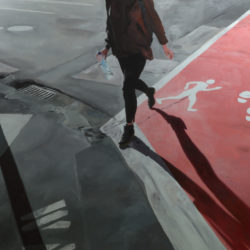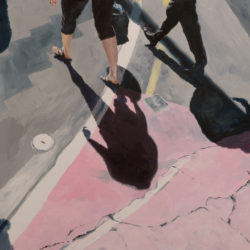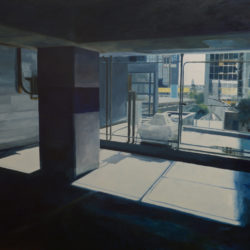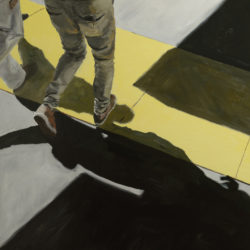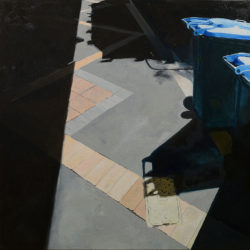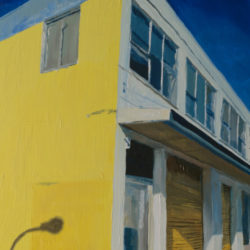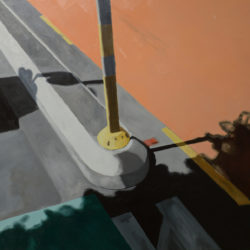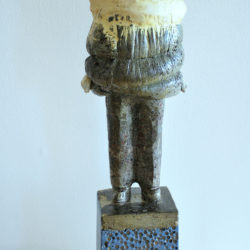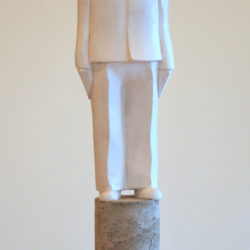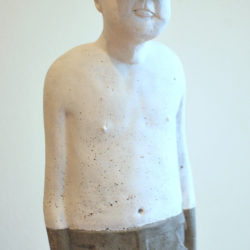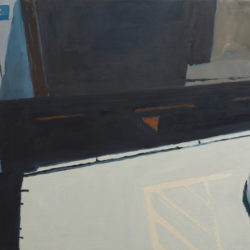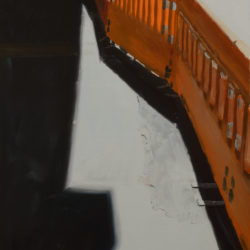Matthew Carter & Ramon Robertson | Exopolis
Matthew Carter and Ramon Robertson‘s combined exhibition of New Work sees both artists exploring the psychology of the city and the individuals relationship to urbanisation, specifically through architecture, interior space and infrastructure.
Exopolis – A city with no centre in which the activity is around the outside.
Matthew Carter is interested in the spatio-psychology of the city and how individuals relate (and are related) to urban and industrial environments. Matthew’s new work explores the ground centre of Auckland City where significant changes are taking place, most notably underground, with the building of the of the City Rail Link. Carter’s paintings push towards abstraction while documenting the movement of people in and around the areas of disruption, with cracks appearing and boundaries shifting, as development goes on underground.Lively flashes of colour have been introduced in contrast to the subdued tones of concrete and shadows, providing both spatial alignment and a visual flow for the viewer to move through. These paintings engage with elements of co-existence between people, structure and environment.Ramon Robertson’s sculpture engages with elements of conformity and union between people, structure and environment with a specific focus on the human condition and behaviour in the city These works navigate the complex layers of human interaction involved in the planning and deployment of ideas in creating a habitable environment which perhaps contradicts our perception of the city as a place of readiness, facility and simplicity.Ramon’s work, often humorously, suggests a hidden syndicate or infrastructure of people behind the scenes. A selection of the sculptures for ‘Exopolis’ work together as a group indicating a connectedness and willing participation in the human design process, while at the same time revealing a silent hierarchy and uniformity in roles and involvement in this collaborative process. His choice of materials (concrete, plaster and wood) link the universal components used in building and manufacture to the individual – making reference to not just the mass-standardisation of objects and resources used in the configuration of the city – but to the population also.

